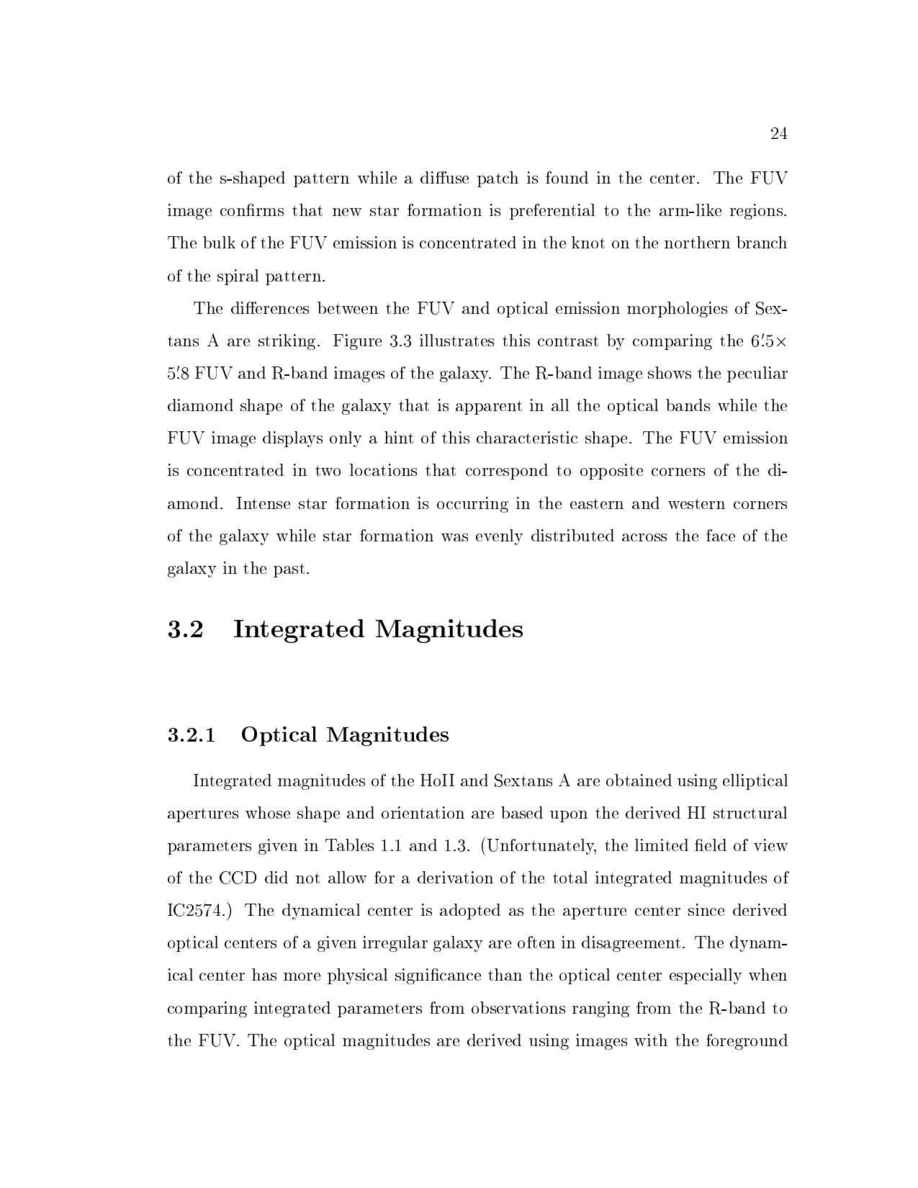Astronomical Applications Department, U.S. Naval Observatory thesis Page 38

24
of the s-shaped pattern while a di use patch is found in the center. The FUV
image con rms that new star formation is preferential to the arm-like regions.
The bulk of the FUV emission is concentrated in the knot on the northern branch
of the spiral pattern.
The di erences between the FUV and optical emission morphologies of Sex-
tans A are striking. Figure 3.3 illustrates this contrast by comparing the 6
:
0
5
5
:
0
8 FUV and R-band images of the galaxy. The R-band image shows the peculiar
diamond shape of the galaxy that is apparent in all the optical bands while the
FUV image displays only a hint of this characteristic shape. The FUV emission
is concentrated in two locations that correspond to opposite corners of the di-
amond. Intense star formation is occurring in the eastern and western corners
of the galaxy while star formation was evenly distributed across the face of the
galaxy in the past.
3.2
In
tegrated
Magnitudes
3.2.1
Optical
Magnitudes
Integrated magnitudes of the HoII and Sextans A are obtained using elliptical
apertures whose shape and orientation are based upon the derived HI structural
parameters given in Tables 1.1 and 1.3. Unfortunately, the limited eld of view
of the CCD did not allow for a derivation of the total integrated magnitudes of
IC2574. The dynamical center is adopted as the aperture center since derived
optical centers of a given irregular galaxy are often in disagreement. The dynam-
ical center has more physical signi cance than the optical center especially when
comparing integrated parameters from observations ranging from the R-band to
the FUV. The optical magnitudes are derived using images with the foreground
